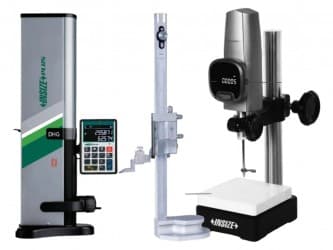Radius gauges
Radius gauges, also known as fillet gauges or
radius templates, are tools used to measure or replicate the radius or
curvature of curved surfaces or edges. They are commonly used in various
industries such as automotive, woodworking, metalworking, and engineering.
Radius gauges are particularly useful for checking and verifying the radius of
existing curves or for transferring radius dimensions from a reference to the
workpiece. Here's an overview of radius gauges:
1. Design and Construction: Radius gauges typically consist of a set of
individual blades or leaves, each having a specific radius size or curvature.
The blades are arranged in a fan-like manner, with each blade labeled with its
corresponding radius value. The blades are often made of durable material, such
as stainless steel, and are attached to a pivot or hinge mechanism for easy
opening and closing.
2. Measurement and Replication: To use a radius gauge, the user selects the
appropriate blade that closely matches the curvature of the surface being
measured or replicated. The blade is then placed against the curved surface,
and the user checks for a proper fit. If the blade fits snugly without gaps or overlaps,
it indicates that the radius of the surface matches the radius of the selected
blade. If none of the available blades match perfectly, the user may select the
closest one and record the difference for further adjustment or replication.
3. Types of Radius Gauges: Radius gauges are available in different sets,
offering a range of radius sizes. Some sets may have a limited number of
blades, while others provide a broader range of radius options. Additionally,
there are specific types of radius gauges designed for particular applications,
such as automotive bodywork, woodworking, or tool and die making.
4. Fillet Radius Measurement: In addition to measuring convex radii, radius
gauges can also be used to measure concave fillet radii. For concave
measurements, the blade is placed inside the fillet or recessed area, ensuring
a proper fit along the curve.
Radius gauges are handy tools for ensuring the accuracy of
curved surfaces and maintaining consistent radii in various applications. They
are commonly used in tasks such as checking the radius of rounded edges,
matching curves for machining or fabrication, inspecting mold and die work, and
verifying the dimensions of machined parts. With their compact and versatile
design, radius gauges provide a convenient and reliable method for measuring
and replicating radii.





